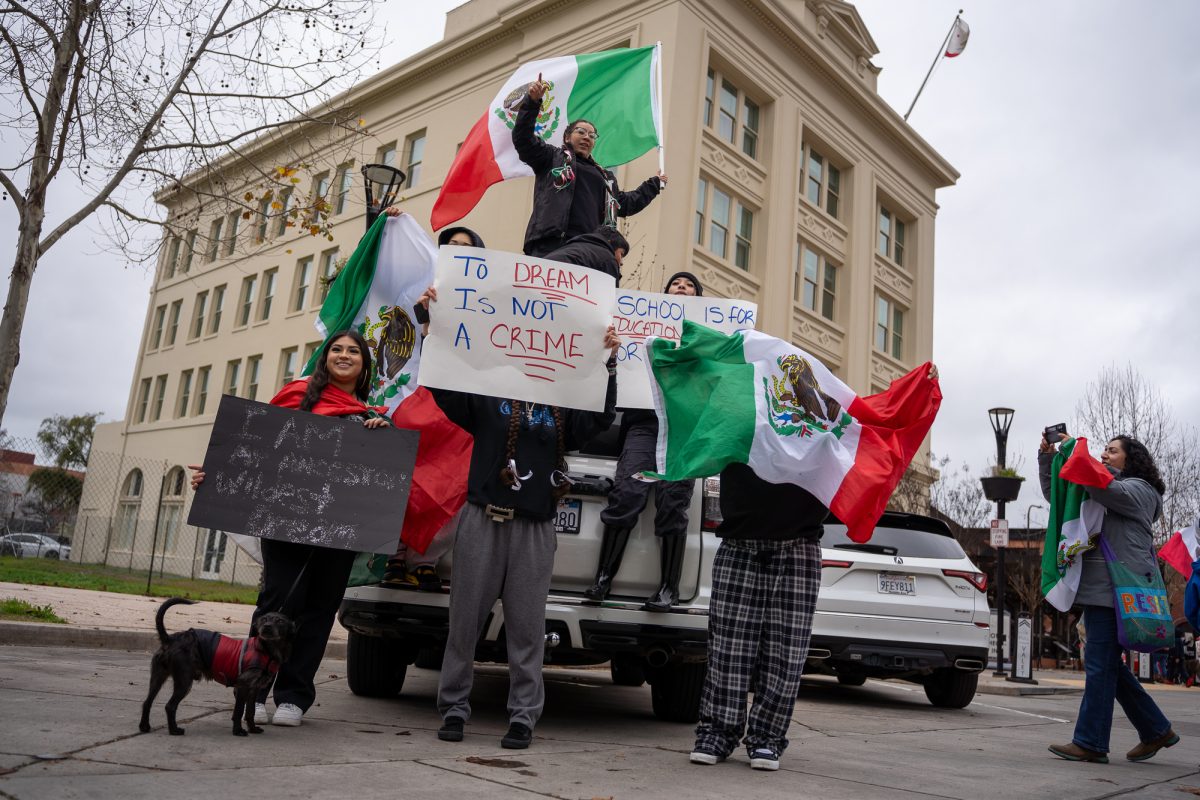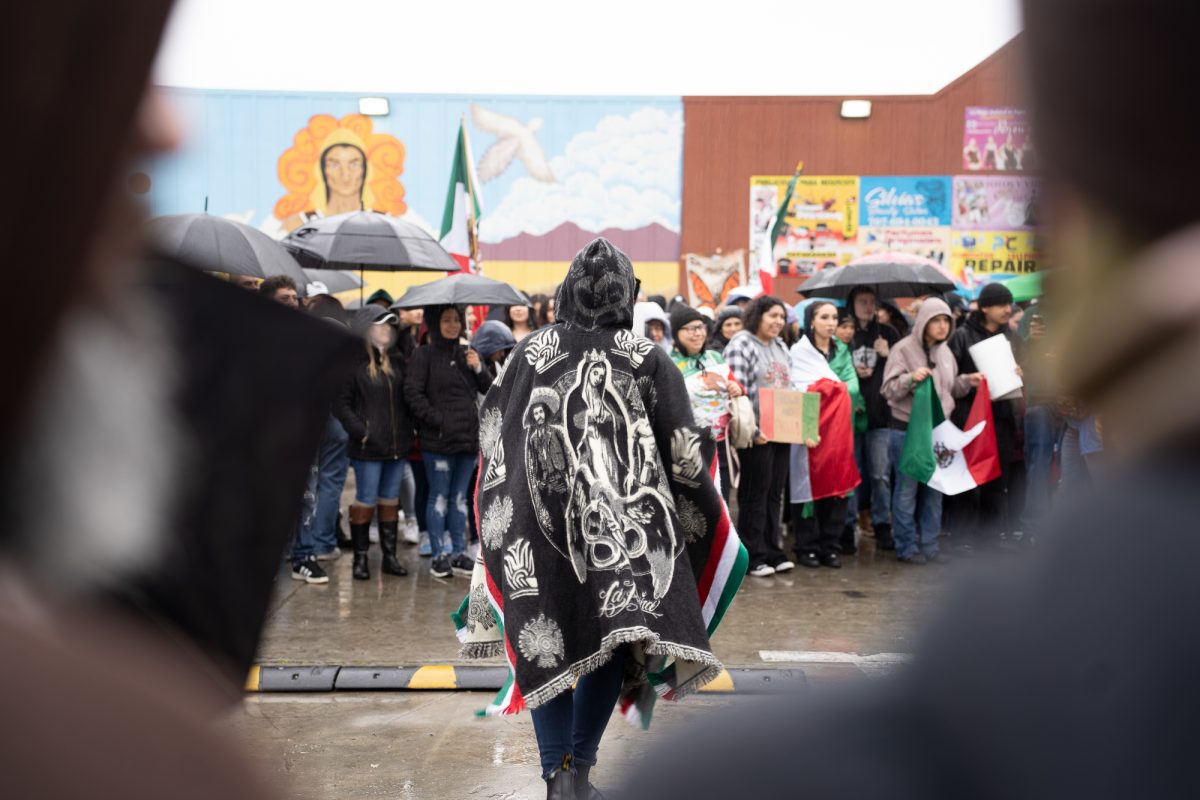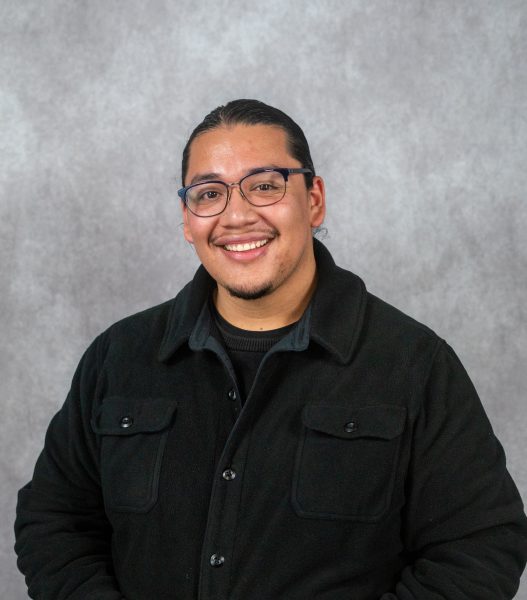Protesters braved rainy weather and skipped work and school to march through downtown Santa Rosa as part of a nationwide protest of President Donald Trump’s immigration policies on Feb. 3.
Crystal Favela Bautista, a 22-year-old business major at Santa Rosa Junior College and her family planned to participate in the “A Day Without Immigrants” protest by staying home from work and school.
Rather than just staying at home, she decided to take it a step further and organize a rally of several hundred community members in support of immigrants at Old Courthouse Square in downtown Santa Rosa.
“If we’re gonna be home instead of work or school and skipping out on the day, then we might as well be productive, not just scroll [on the phone] and see other people protesting,” Favela Bautista said. “We decided we’re gonna be out here…and invite other people if they want to be a part of it.”
Tensions mounted across the country as President Donald Trump began his immigration crackdown, one of the key pillars of his campaign according to CBS News. In response, activists organized protests against increased Immigration and Customs Enforcement (ICE) raids taking place throughout the country.
Protesters arrived and Favela Bautista instructed everyone to gather on the Third Street side of Old Courthouse Square around noon.
Lowriders rolled past, flags whipped in the wind, horns blared and the crowd cheered, “¡Sí se puede!”
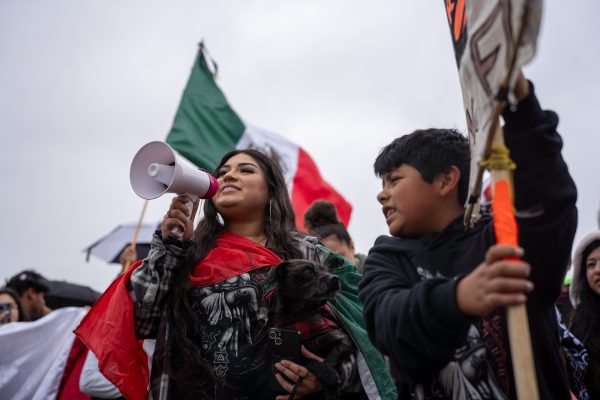
“Without immigrants, we wouldn’t have food,” said Karen Gopar, a 25-year-old nurse and first-generation Santa Rosa resident. “We were the people that fed everyone during the pandemic. My parents came here with a dream, and it’s just so sad that such horrifying things are going on.”
New to Santa Rosa, and the daughter of immigrants, 25-year-old Noelia Perez is scared for her community now that President Trump is back in office, but was comforted to see the massive support shown during the protest.
“Doing this really assures the community, although we are all strangers to each other, that they’re not alone,” Perez said.
Javier Guzmán, the 73-year-old founder of local radio station KBBF, described his childhood as the son of migrant farm workers in California seeking better economic opportunities. At 13 years old, he used el corto, a short-handled hoe, to farm produce such as lettuce, cotton and sugar beets. He was paid $2.50 per row, each one half a mile long.
“It was terrible, backbreaking work,” Guzmán said. “Even [back then] I learned this wasn’t a country where you come to do something glorifying, you had to work.”
Guzmán hopes farm workers gain better living and working conditions as they are the lifeblood of the wine industry here in Sonoma County.
Full-time vineyard workers in Sonoma County are 6,000 strong and make up 5.6% of the Latino population in the county, according to SonomaWise.
Rebecca and Bill Montgomery, a retired Santa Rosa couple, happened to be in downtown Santa Rosa on Monday and stopped to show support.
“I’m devastated. It’s so tragic that [Trump’s] back,” Rebecca Montgomery said. “We’ve got a battle on our hands.”
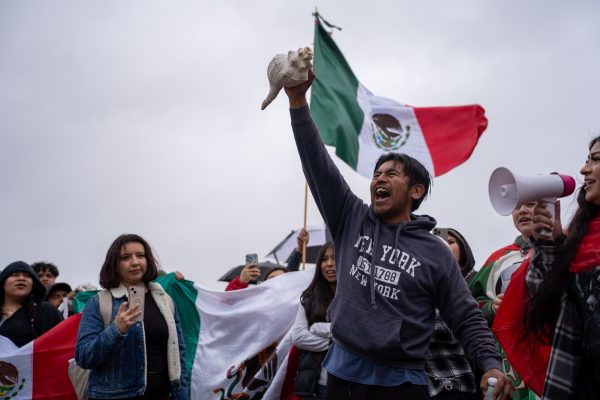
As the crowd grew, they took to the street chanting just after 1 p.m. In an orderly line, intended as a representation of a monarch caterpillar. The group marched around the square a few times, then regrouped back at the Third Street side of Old Courthouse Square and headed through downtown toward the Roseland neighborhood, a predominantly Latino neighborhood in Santa Rosa.
The protesters made their way down Sebastopol Road and passed Latino-owned businesses such as Lola’s and Camacho Market – two shops that were closed in support of “A Day Without Immigrants.”
Onlookers met the crowd with loud cheers along the way as people came out of their homes, businesses and cars to show their support for the march.
The group reached the parking lot behind Mitote Food Park and cheered as multiple speakers made announcements regarding community protection, sharing guidelines for reporting ICE activity.
“I think it’s important to show up for what you believe in. I mean, if we all didn’t believe in this cause, we wouldn’t be here,” Favela Bautista said. “I think it’s just to show people here, at least for me personally, to show the older generation that we are here, and we’re just trying to be the advocates for them as well.”





